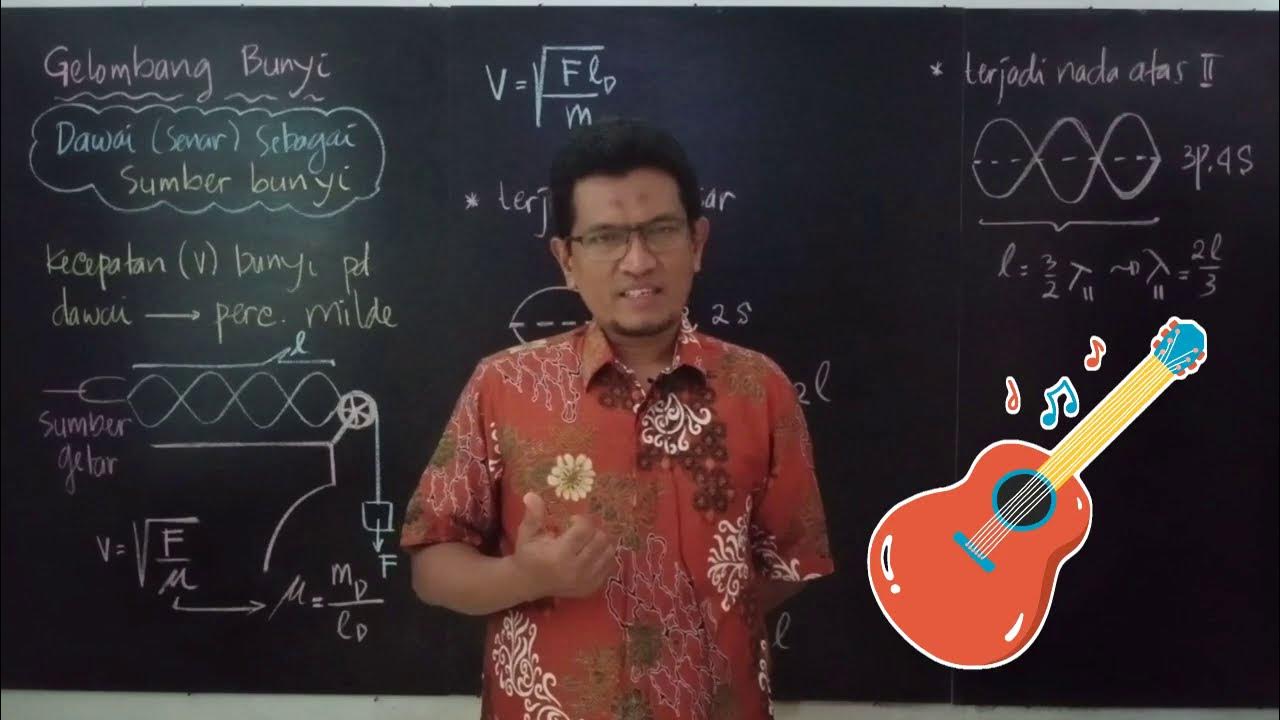Slinkys and Soundwaves
Summary
TLDRThis video highlights how slinkies, often seen as a simple toy, can help explain the physics of sound waves. By demonstrating both transverse and longitudinal waves, the video shows how sound is created through vibrations. The slinky is used as a model to visualize how sound waves move, with high-pressure pushes and low-pressure pulls causing sound. The volume and pitch of sound are explained in terms of vibration size and frequency. The video emphasizes how even a 70-year-old toy can offer valuable insights into the mysteries of physics.
Takeaways
- 😀 Slinkies are not just fun toys; they can help us understand the mysteries of sound and waves.
- 😀 There are two main types of waves: transverse waves and longitudinal waves.
- 😀 Transverse waves involve particles moving up and down, like light waves.
- 😀 Longitudinal waves involve particles being pushed together and pulled apart by vibrating objects.
- 😀 Sound is caused by longitudinal waves, with alternating high and low-pressure areas.
- 😀 The slinky can demonstrate longitudinal waves, showing how sound energy radiates out.
- 😀 Our ears can hear these alternating pushes and pulls in the air as sound.
- 😀 Volume is determined by the size of the vibration: larger vibrations create louder sounds.
- 😀 Pitch is determined by the frequency of vibrations (pushes and pulls per second).
- 😀 Humans can hear frequencies between 20 Hz and 20,000 Hz, with higher frequencies producing higher pitches and lower ones producing lower pitches.
Q & A
What is the main function of a slinky in this video?
-The slinky is used as a demonstration tool to help understand the concepts of sound waves, specifically transverse and longitudinal waves.
How do transverse waves behave, according to the script?
-In transverse waves, the particles move up and down, with the wave energy moving perpendicular to the direction of the wave.
What are longitudinal waves, and how are they related to sound?
-Longitudinal waves are waves in which particles are pushed together and pulled apart. These pressure variations cause sound, as air particles vibrate in the same direction as the wave.
How does the slinky help visualize longitudinal waves?
-The slinky demonstrates longitudinal waves by showing how high-pressure pushes and low-pressure pulls move through the slinky when a hand moves back and forth.
What determines the loudness of a sound?
-The loudness of a sound depends on the size of the vibration. Larger vibrations create waves with more energy, producing louder sounds.
What is the relationship between the frequency of vibrations and sound pitch?
-Pitch is determined by how many vibrations, or pushes and pulls, hit your ear every second. More frequent vibrations result in higher-pitched sounds, while less frequent vibrations create lower-pitched sounds.
What is the range of frequencies humans can hear?
-Humans can hear frequencies between 20 Hertz (Hz) and 20,000 Hz, or 20 vibrations per second to 20,000 vibrations per second.
How do the high-pressure pushes and low-pressure pulls contribute to sound?
-These pressure variations, created by vibrating objects, move through the air and are detected by our ears, which helps us perceive sound.
How does a vibrating object influence sound?
-A vibrating object causes particles in the air to move, creating waves of high and low pressure. These waves travel through the air, allowing us to hear sound.
What is the significance of the slinky in understanding physics and sound?
-The slinky serves as a simple model to demonstrate complex physics concepts, such as how sound waves work, and how both transverse and longitudinal waves function.
Outlines

This section is available to paid users only. Please upgrade to access this part.
Upgrade NowMindmap

This section is available to paid users only. Please upgrade to access this part.
Upgrade NowKeywords

This section is available to paid users only. Please upgrade to access this part.
Upgrade NowHighlights

This section is available to paid users only. Please upgrade to access this part.
Upgrade NowTranscripts

This section is available to paid users only. Please upgrade to access this part.
Upgrade NowBrowse More Related Video
5.0 / 5 (0 votes)





